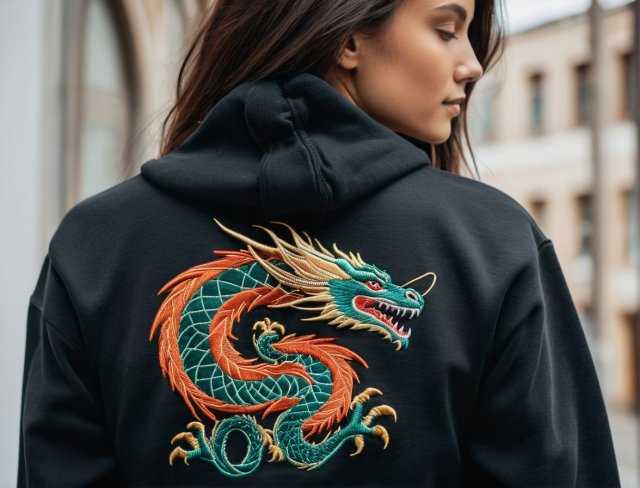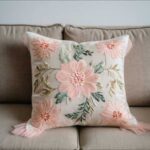Gleaming Artistry
Mastering Metallic Thread Embroidery for Luxurious Designs
Introduction
The usage of metal within thread for embroidery is a captivating technique that infuses designs with a distinctive, radiant quality, elevating them beyond conventional embroidery. This specialized thread, with its reflective, shimmering finish, adds a luxurious touch that can transform simple patterns into dazzling, high impact creations. However, working with metallic finished thread requires a nuanced understanding of its unique properties and the specific challenges it presents. From achieving smooth stitching to managing thread behavior, mastering metallic thread embroidery involves a combination of technical skill and creative insight.
In this article, we delve into the art of metallic thread embroidery, exploring essential techniques and design considerations that ensure stunning results. We will cover strategies for overcoming common challenges such as thread breakage and uneven stitching, and offer guidance on optimizing design elements to showcase the thread’s brilliance. By applying these insights, you can harness the full potential of this thread to create intricate, luxurious designs that captivate and impress, turning every project into a shining example of embroidery excellence.
The Allure of Metallic Thread
This type of thread is revered for its ability to elevate embroidery projects with an unparalleled touch of luxury and sophistication. This unique thread, unlike its cotton or polyester counterparts, boasts a distinct construction that contributes to its remarkable sheen. Typically, metallic thread consists of a core, often made of polyester or nylon, that is wrapped in a thin layer of metal foil. This foil is then coated with a layer of resin or lacquer to enhance durability and prevent tarnishing. The result is a thread that not only shines brilliantly under light but also offers a striking visual contrast that can dramatically enhance the overall design.
The allure of this specialized thread lies in its versatility and the dynamic effects it can produce. When used judiciously, the thread can transform simple designs into intricate, eye catching works of art. It excels in highlighting details, creating depth, and adding a three dimensional quality to embroidery. For instance, a simple floral pattern can be brought to life with the use of gold metallic thread for the stamens or silver thread for the petals’ edges, resulting in a design that catches the light from different angles and appears almost lifelike.
Moreover, metallic style thread has a storied history that adds to its appeal. Historically, these threads were made of precious metals like gold and silver, and their use was often reserved for royalty and religious garments. These threads symbolized wealth, power, and divine connection, and even today, metallicized thread carries a sense of opulence and grandeur. This historical significance makes metal threads a favorite in designs meant to convey prestige and importance, whether in ceremonial robes, haute couture fashion, or bespoke home décor items.
In contemporary embroidery, the range of available metal style fabric threads has expanded significantly, allowing for even greater creative freedom. Embroiderers can now choose from a wide array of colors, including rich jewel tones like emerald, sapphire, and ruby, in addition to the classic gold and silver. This variety enables artists to experiment with different color combinations and achieve effects that range from subtle elegance to bold, statement making designs. For instance, the use of metallic threads in modern fashion embroidery allows designers to create pieces that are not only beautiful but also reflect the wearer’s personality and style in a unique way.
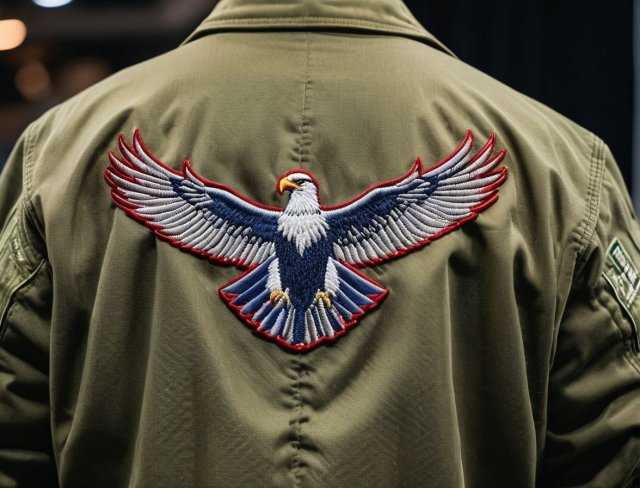
The reflective quality of metal in the thread also makes it ideal for use in embroidery that is intended to be seen from a distance or in low light settings. The thread’s ability to catch and reflect light means that it can make designs stand out in environments where other threads might blend into the background. This makes the material of this thread type a popular choice for embroidery on stage costumes, evening wear, and holiday decorations, where the goal is to create a visually striking effect that captures attention.
Additionally, the durability of the metallic consistency has improved over time, thanks to advancements in manufacturing technology. Modern threads are more resistant to tarnishing, fraying, and breakage, which were common issues with earlier versions. This durability ensures that embroidered designs maintain their brilliance and integrity over time, even after repeated use and washing. As a result, metallic fiber thread is now more accessible to a wider range of embroiderers, from hobbyists to professionals, who can confidently incorporate it into their projects without worrying about premature wear and tear.
In essence, metal embodies the perfect blend of tradition and innovation, offering embroiderers a tool that can infuse their work with a sense of luxury, history, and modern creativity. Its versatility, combined with its unique visual properties, makes metallic thread an indispensable component in the arsenal of any embroiderer looking to create designs that are not only beautiful but also timeless. Whether used sparingly to add a touch of shimmer or as the primary focus of a design, this thread continues to captivate and inspire, cementing its place as a cornerstone of luxurious embroidery.
Techniques for Achieving Smooth Metallic Embroidery
Metallic embroidery, while stunning in its finished form, poses several challenges that can frustrate even experienced embroiderers. The thread’s unique composition, usually a synthetic core wrapped in metallic foil, gives it both its luster and its reputation for being tricky to work with. From breakage to uneven stitching, there are multiple factors that need careful attention. However, by mastering specific techniques and adjustments, you can overcome these challenges and achieve smooth, consistent results.
1. Selecting the Right Needle:
The choice of needle is one of the most critical factors in successful embroidery. Needles specifically designed for threads which are metallic have elongated, polished eyes that reduce friction as the thread passes through. This is essential because metal infused thread is more rigid than standard embroidery threads, and increased friction can lead to breakage and fraying.
Using a needle with a larger eye reduces the tension exerted on the metal core thread, allowing it to glide more smoothly. A size 90/14 metallic needle is generally recommended for most metallic threads, though finer threads may require a smaller size. Needle selection should always be tailored to both the thickness of the thread and the density of the design.
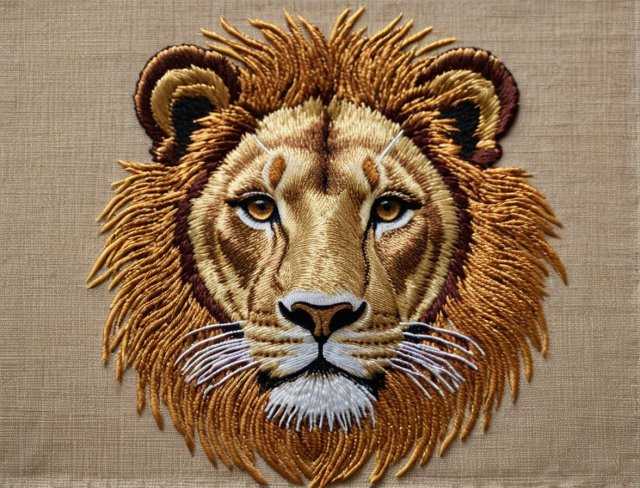
2. Adjusting Machine Settings:
Machine settings play a pivotal role in preventing common issues like thread breakage and uneven tension. Embroidery machines typically run at high speeds, which can generate excess heat and friction when using metallic threads. Reducing the speed to a moderate pace, around 400 to 600 stitches per minute, can greatly improve performance, allowing the thread to move smoothly without the strain that leads to fraying. Equally important is adjusting the upper thread tension.
Loosening the tension slightly ensures that the thread lies flat on the fabric rather than being pulled too tightly, which can distort the design or cause thread breakage. In some cases, machines equipped with automatic tension control can be fine tuned to optimize performance with this specific thread type, but manual adjustments often yield better results.
3. Using Quality Stabilizers:
Stabilizers are essential in embroidery, and they become even more critical when working with metallic threads. The reflective, slightly rigid nature of the metal can create additional stress on the fabric, leading to puckering or shifting during stitching. A robust stabilizer provides the necessary foundation, helping the fabric maintain its shape and preventing unwanted movement. The choice of stabilizer depends on the type of fabric and design. For dense or intricate designs, a cut away stabilizer offers the most stability, especially for stretchy or delicate fabrics.
On the other hand, tear away stabilizers can be effective for simpler designs on sturdy fabrics. In some cases, a combination of stabilizers may be needed to achieve the perfect balance between support and ease of removal. Water soluble stabilizers can also be used as a topping when embroidering on textured fabrics, helping the metallic thread sit neatly on the surface without sinking into the material.
4. Thread Management and Spooling Techniques:
Proper thread handling is often overlooked but can make a significant difference when embroidering with metallic thread. These threads are prone to twisting and looping due to their unique construction, which can lead to knotting and breakage if not managed correctly. Using a vertical spool holder or a specialty thread stand can help ensure that the thread unwinds smoothly, reducing the risk of tangles.
Thread nets and spool caps are also effective tools for maintaining consistent tension and preventing the thread from unraveling prematurely. For larger projects, consider using a spool that allows for smooth, continuous feeding, minimizing the need for frequent thread changes, which can introduce inconsistencies in stitching.
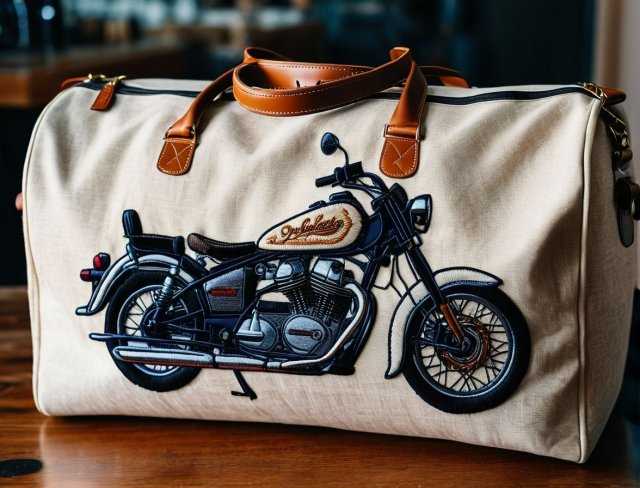
5. Experimenting with Thread Conditioners:
Thread conditioners or lubricants can be game changers when working with metallic threads. These products coat the thread with a thin, smooth layer, reducing friction as the thread passes through the needle and the fabric. This not only minimizes fraying and breakage but also helps the thread maintain its integrity and sheen throughout the embroidery process.
Conditioners are particularly useful when embroidering dense designs or using high speed machines, where friction is more likely to be an issue. While some embroiderers prefer natural solutions like beeswax, others opt for commercial thread conditioners that are specifically formulated for metallic and specialty threads.
6. Testing and Fine Tuning Designs:
Before embarking on a large or intricate project, it’s essential to run test stitches using the exact combination of fabric, stabilizer, needle, and thread you plan to use. Metallic thread’s reflective nature can highlight even the smallest imperfections, so fine tuning the design’s stitch density, underlay, and direction is key.
Designs with fewer stitches and open areas generally work best with this thread, as dense stitching can place too much strain on the thread, leading to breakage and uneven results. Adjusting the underlay, those hidden stitches that provide a foundation for the design, can also improve the overall appearance. A light, supportive underlay helps keep the fabric stable and ensures that the thread lies smoothly on top.
7. Strategic Use of Metallic Thread in Combination with Other Threads:
One of the most effective ways to achieve smooth metallic embroidery is by combining metallic threads with regular embroidery threads. Metal thread’s brilliance can be used strategically as an accent rather than the primary thread throughout the design. For instance, combining them with rayon or polyester threads allows you to create highlights, outlines, or subtle sparkles within a design without overloading it. This approach not only reduces the strain on the metallicized thread but also adds depth and texture, making the design more visually engaging. Balancing the use of this thread type with other thread types ensures that the final product has the perfect blend of shimmer and durability.
Achieving flawless results with metallic embroidery thread requires a combination of technical knowledge, careful planning, and a willingness to experiment. By selecting the right tools, adjusting your machine settings, and managing your thread properly, you can transform the challenges of metal infused thread into opportunities for creating exquisite, luxurious embroidery that captures the eye and stands the test of time.
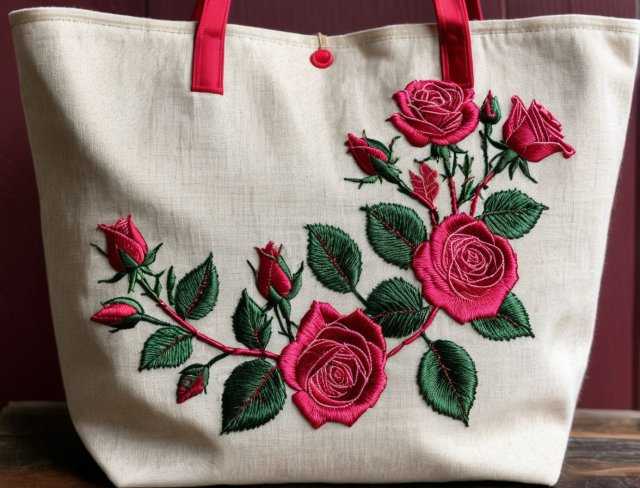
Design Considerations
When incorporating metallic thread into your embroidery designs, it’s essential to approach the process with a deep understanding of how this unique thread behaves and how it interacts with other elements of your design. To achieve optimal results, careful planning and strategic decisions are key. Below are crucial design considerations to keep in mind when working with metallic thread:
• Stitch Density and Design Complexity
Metallic thread is thicker and less flexible than standard embroidery threads, so dense or overly intricate designs can pose challenges. Reducing stitch density is crucial, as too many stitches packed closely together can lead to thread breakage, uneven stitching, and even fabric puckering. Opting for designs with more open areas or using satin stitches instead of fill stitches allows the metal within the thread to shine while maintaining a smooth finish. Designs that incorporate bold lines, outlines, and motifs with ample spacing are ideal for showcasing the reflective qualities of the thread without overloading the fabric.
• Thread Path and Directional Stitching
The path and direction of your stitches play a significant role in the overall appearance of metallic embroidery. Due to the thread’s rigidity, it’s best to plan for smoother curves and avoid sharp angles or abrupt changes in stitch direction. When the thread is forced to twist and turn sharply, it can cause kinks, affecting both the thread’s appearance and its durability. Considering the flow of the design is critical, long and fluid stitch lines will allow the metallic thread to reflect light evenly, resulting in a consistent shimmer across the entire design.
• Underlay Stitching for Support
Underlay stitches act as a foundation, stabilizing the fabric and providing support for the top stitches. When using metallic thread, an underlay is especially important to prevent the thread from sinking into the fabric and losing its luster. A carefully planned underlay, such as a zigzag or double zigzag stitch, provides a smooth surface for the thread to sit on, enhancing the design’s overall appearance. The underlay also helps manage the tension and reduces the risk of the thread pulling or breaking during the embroidery process.
• Balancing Metallic Threads with Standard Threads
Metallic thread works best when used as an accent rather than dominating the entire design. Incorporating regular embroidery threads alongside metal threads creates a balanced look while emphasizing the shimmering details. For example, using polyester or rayon threads for the bulk of the design and reserving the metallic for highlights, outlines, or specific elements, such as stars, flourishes, or text, prevents the design from becoming overwhelming or visually cluttered. This approach also reduces the likelihood of thread issues, allowing you to maintain both the integrity of the design and the impact of the metallic accents.
• Color Coordination and Contrast
Choosing complementary colors is vital when integrating metallic threads. The reflective nature of metal can sometimes overpower other colors in the design, so selecting shades that harmonize or contrast well is key. For instance, pairing gold metallic color with rich tones like deep red, navy blue, or emerald green creates a striking, elegant look. Similarly, silver threads work beautifully with pastels and cooler tones like lavender, icy blue, or soft gray. Understanding the interplay between the metallic sheen and the surrounding colors ensures that the design remains cohesive and visually appealing.

• Fabric Compatibility and Texture
Threads that are metallic can be challenging to work with on certain fabrics, especially those that are too delicate or have a lot of stretch. The thread’s stiffness can cause distortion, puckering, or uneven stitching on lightweight or highly flexible fabrics like silk, jersey, or tulle. For best results, use metallic threads on medium to heavy weight fabrics, such as cotton, linen, or canvas, which provide the stability needed to support the thread. When working with textured fabrics, consider using a water soluble topping to keep the metal look on the fabric’s surface, ensuring a smooth finish.
• Scale and Proportion in Design
The scale of your design plays a significant role in how metallic thread is perceived. Smaller, more detailed designs can become cluttered when these threads are used excessively, as the reflective surface tends to highlight every element, sometimes to the point of distraction. Larger designs with well defined sections allow the metal to stand out while maintaining a balanced composition. Embroiderers should carefully evaluate how the scale of the design will interact with the reflective qualities of the thread, ensuring that the final result is both striking and harmonious.
• Layering and Blending Techniques
For embroiderers looking to push creative boundaries, layering and blending metal threads with other thread types can yield remarkable effects. Combining metallic and matte threads, for instance, can create a beautiful contrast that adds depth and dimension to the design. Subtle blending techniques, like alternating metallic stitches with regular stitches in gradient areas, result in a nuanced, almost ethereal glow. Layering this thread over a base of colored thread can also create a soft, diffused shimmer that adds sophistication without overwhelming the design.
• Design Purpose and Usage Context
Finally, consider the end purpose of the design when planning to use metallic thread. Designs meant for high wear items like clothing or accessories should use the metal thread sparingly to avoid compromising durability, as the threads can still be less resilient than traditional threads. For projects like wall art, ceremonial garments, or special occasion décor, where the visual impact is the primary focus, these thread can be used more liberally to achieve a luxurious and eye catching effect.
Understanding how the design will be used helps guide decisions on where and how to incorporate metallic thread for the best results. By thoughtfully integrating these design considerations, you can harness the unique qualities of this thread type, to create embroidery projects that are not only visually stunning but also well balanced, durable, and professional in finish.
Overcoming Common Challenges
Embroidery with metallic thread presents a range of challenges that can affect the quality and ease of the final product. Understanding these common issues and implementing effective strategies to overcome them is crucial for achieving smooth, beautiful results. Here’s an in depth look at how to tackle some of the most frequently encountered problems with metallic thread:

Thread Breakage:
Thread breakage is one of the most frustrating challenges when working with metallic thread. This issue often arises from excessive friction and tension, as the metallic foil wrapping is prone to wear and tear under stress. To mitigate thread breakage:
♦ Use the Correct Needle: Opt for needles specifically designed for metallic threads, with larger eyes and a smooth, polished finish. These needles reduce friction and prevent the thread from snagging or breaking.
♦ Adjust Tension: Lowering the upper thread tension slightly can help the metallic thread glide more smoothly through the fabric without excessive pulling. Always test tension adjustments on a sample fabric before starting your main project.
♦ Reduce Machine Speed: Operating your machine at a slower speed minimizes the friction and heat generated, which can help prevent thread breakage. Aim for a speed of 400 to 600 stitches per minute when working with metallic threads.
♦ Check Thread Path: Ensure the thread is properly threaded through all guides and the needle. Any misalignment or excessive twisting in the thread path can increase the risk of breakage.
Uneven Stitching:
Uneven stitching with metallic thread can result in a design that appears inconsistent or poorly executed. To achieve uniform stitches:
♦ Ensure Proper Stabilization: Use the appropriate stabilizer for your fabric and design. A stable foundation helps keep the fabric and thread in place, reducing the risk of uneven stitching.
♦ Maintain Consistent Tension: Even minor variations in tension can lead to uneven stitches. Regularly check and adjust the upper thread tension, and ensure that the bobbin tension is also correctly set.
♦ Test and Adjust Designs: Conduct test stitches on a fabric sample before starting on your final piece. Adjust the stitch density and design elements based on the test results to ensure consistency in the final design.
Fraying and Shredding:
Metallic threads are susceptible to fraying and shredding due to their metallic coating. This issue can be particularly problematic in areas with high stitch density. To prevent fraying:
♦ Use Thread Conditioners: Apply a thread conditioner or lubricant designed for metallic threads. These products help reduce friction and protect the thread from fraying and shredding.
♦ Adjust Stitch Length: Increasing the stitch length can reduce the stress on the thread, minimizing fraying. For intricate designs, consider using longer stitches to avoid overloading the thread.
♦ Avoid Tight Turns: Design elements with sharp turns or tight angles can exacerbate fraying. Opt for smoother curves and transitions in your design to reduce stress on the thread.

Puckering and Distortion:
Puckering and distortion can occur when the metallic thread pulls the fabric unevenly, especially on lightweight or stretchy materials. To address these issues:
♦ Use the Right Stabilizer: Choose a stabilizer that provides adequate support for the fabric and design. For lightweight fabrics, consider using a cut away stabilizer, while for stretchy materials, a combination of stabilizers may be necessary.
♦ Reduce Tension: Both upper and bobbin thread tensions should be adjusted to prevent puckering. Loosening the upper thread tension can help the metallic thread lay flatter on the fabric.
♦ Pre Wash Fabric: Washing the fabric before embroidering can help pre shrink and stabilize it, reducing the likelihood of puckering and distortion.
Thread Tangling and Loops:
Thread tangling and loops can result from improper handling or tension issues. To prevent these problems:
♦ Use a Thread Stand: A vertical thread stand or spool holder helps keep the thread from twisting and tangling, allowing it to feed smoothly into the machine.
♦ Check Thread Path: Ensure that the thread follows the correct path through all guides and the needle. Any deviations can cause tangling and looping.
♦ Employ Thread Nets: Thread nets or spool caps can prevent the thread from unraveling or creating loops, particularly with spools that are prone to excessive unwinding.
Metallic Thread and Fabric Compatibility:
Certain fabrics may not work well with metallic thread due to their texture or flexibility. To ensure compatibility:
♦ Choose Suitable Fabrics: Opt for medium to heavy weight fabrics that provide the necessary support for metallic threads. Fabrics like cotton, canvas, and denim are typically more compatible with metallic thread.
♦ Use a Topping: For textured or pile fabrics, such as terry cloth or velvet, use a water soluble topping to keep the metallic thread from sinking into the fabric. This helps the thread sit evenly on the surface and maintains its visual impact.

Maintaining Thread Integrity Over Time:
Metallic threads can sometimes lose their sheen or degrade over time, especially if subjected to frequent washing or wear. To preserve thread integrity:
♦ Follow Care Instructions: Adhere to care instructions for both the fabric and the metallic thread. Typically, this includes gentle washing in cold water and avoiding harsh detergents or bleach.
♦ Avoid Excessive Friction: Minimize friction during washing and drying by using a gentle cycle and placing the item in a protective garment bag. This helps maintain the thread’s shine and prevents damage.
By addressing these common challenges with targeted solutions, you can ensure that your metallic thread embroidery projects achieve the high quality, professional results you desire. With careful attention to detail and thoughtful adjustments, you can overcome obstacles and create stunning designs that showcase the unique beauty of metallic thread.
Conclusion
Metallic thread embroidery offers an unparalleled opportunity to add a luxurious, shimmering quality to designs, transforming them into eye catching works of art. By understanding and addressing the unique challenges of metallic threads, such as thread breakage, uneven stitching, and fraying, embroiderers can achieve smooth, professional results. Key techniques include selecting the right needle, adjusting machine settings, and using appropriate stabilizers and thread conditioners. These steps help minimize issues and ensure that the metallic thread shines brightly without compromising the design’s integrity.
Design considerations, such as stitch density, thread path, and fabric compatibility, are essential for making the most of metallic threads. Balancing metallic accents with standard threads and carefully planning your design can enhance its visual impact while maintaining durability. By applying these strategies, embroiderers can create stunning, high quality projects that showcase the full potential of metallic thread, turning ordinary designs into elegant and sophisticated pieces that capture and hold attention.
Now that you have read through this article, feel free to SHOP for products we have created. If you are looking for something special which isn’t in our store, feel free to contact us.
